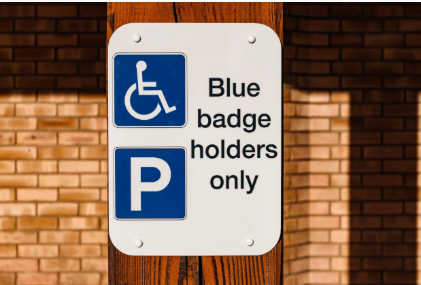What is Attendance Allowance and who can claim it?

Chris Watts: MSWW, CeMAP
Last verified: 16 August 2025 (England & Wales)
Quick-read summary 📝
Attendance Allowance is a tax-free, non-means-tested benefit for people over State Pension age who need help because of illness or disability.
- It doesn’t matter what your income or savings are.
- You don’t need to have a carer – it’s about your care needs, not who provides them.
- Payments are made weekly, and they can make a big difference to day-to-day living.
Applying can feel daunting – the form is nearly 30 pages long – but the potential benefit is significant. Getting it right can unlock support not only for the applicant, but sometimes for their wider family too.
Practical checklist ✅
You may be eligible for Attendance Allowance if you:
- Are over State Pension age.
- Have care or supervision needs because of a physical or mental health condition.
- Need help with things like personal care, supervision for safety, or managing medication.
- Have had these needs for at least six months (unless you are terminally ill).
Payment levels (from April 2025):
- Lower rate: £72.65 per week.
- Higher rate: £108.55 per week.
What to consider
- Application process: The form is 28–30 pages and can feel overwhelming. Many applicants under-report their needs, which risks rejection.
- No carer required: You don’t need to have a named carer to qualify. It’s based on your own needs.
- Impact on other benefits: Attendance Allowance can unlock further entitlements, for example increased Pension Credit or Council Tax Reduction.
- Backdating: Claims can often be backdated to the date the application was received.
- Professional help: Some people choose to complete the form themselves, while others prefer expert assistance to improve their chances of success.
How this works in real life
We recently helped a client – we’ll call her Mrs C – who struggled with mobility and needed supervision at night. She had assumed she wouldn’t qualify because her daughter was already helping her.With our support, we carefully documented her actual care needs. Mrs C was awarded the higher rate, giving her an extra £108.55 a week. That extra income not only eased her daily living costs, it also meant she could arrange more outside support and take pressure off her daughter.
Frequently asked questions
Do I need a diagnosis to claim?
No. It’s about your actual care needs, not just a diagnosis.
Does having savings stop me claiming?
No. Attendance Allowance is not means-tested, so your income and savings don’t matter.
Can it affect my pension or tax?
No. It’s tax-free and does not reduce your State Pension.
What if my condition changes?
If your needs increase, you can reapply for a higher rate.
Is there a time limit on applying?
No – but the sooner you apply, the sooner payments can begin. Claims are usually backdated to when the form was received.
Blue Badge applications

A Blue Badge lets people with significant mobility difficulties park closer to where they need to be. Decisions are made by your local council, and you apply via GOV.UK (the service routes your request to your council).
Fees are set locally: up to £10 in England, £20 in Scotland, and free in Wales.
Badges usually last up to 3 years and you must reapply before expiry.
Who may qualify
- Some people automatically qualify (for example, certain PIP/DLA mobility awards or registered severe sight impairment).
- Others may qualify after further assessment if walking is very difficult or you have a non-visible (hidden) disability that makes journeys hard to undertake safely or repeatedly.
- Attendance Allowance does not give automatic entitlement, but many applicants receiving it do qualify under the assessment criteria if their mobility or supervision needs are significant.
What you’ll need to apply
Have these ready to speed things up: a recent passport-style photo, proof of identity, proof of address, and proof of benefits (if you get any). You’ll also need your NI number (if you have one). Councils may invite you to an assessment.
How we can help
If you’d like support, we can guide you through the online form, help you prepare good evidence (for example, how far you can walk, how long it takes, pain, breathlessness, safety risks), and liaise with the council if they ask for more information.
Optional Technical Notes (for those who want the detail…)
- Legislation: Attendance Allowance is provided under section 64 of the Social Security Contributions and Benefits Act 1992.
- Eligibility rules: Care or supervision needs must have existed for at least six months, unless the claimant is terminally ill (in which case special rules apply).
- Rates: Current weekly rates are set by the Department for Work and Pensions (DWP) and reviewed annually. From April 2025:
- £72.65 (lower rate)
- £108.55 (higher rate)
- Form: Application is made on the DWP’s AA1 form (28–30 pages). Guidance is available on gov.uk.
Sources & further reading
- Gov.uk – Attendance Allowance overview
- Social Security Contributions and Benefits Act 1992
- Gov.uk – Apply for a Blue Badge
Closing recap & next steps
Attendance Allowance is a lifeline benefit for many older people, yet it is often overlooked or misunderstood. If you or a loved one has care needs, checking eligibility could bring in much-needed extra support.
At Fern Wills & LPAs, we can guide you through both Attendance Allowance and Blue Badge applications, helping you present the strongest possible case.
Next step: Contact us for a no-obligation chat about whether you or a family member might qualify.


